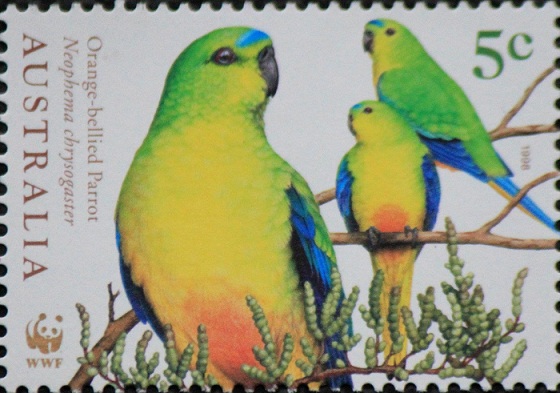The orange-bellied parrot (Neophema chrysogaster) has a history as colourful as its feathers. The bird was first described by ornithologist John Latham in 1790. He gave it the specific name, chrysogaster, Ancient Greek for 'golden belly'. It has previously been known as the Orange-breasted Parrot - a name given to the Orange-bellied Parrot in 1926 by the Royal Australasian Ornithologists Union or RAOU (now Birdlife Australia) when the word 'belly' was considered inelegant. The orange-bellied parrot is also one of Australia's most endangered birds, listed as ''critically endangered'' - one step above ''extinct''. There are fewer than 50 in the wild. Every summer the birds breed in south-west Tasmania. There they are met by a recovery team which monitors them, provides feed and maintains nest boxes. In colder months the parrots, one of only two species of parrot which migrate , go to the saltmarshes of Victoria and South Australia. The diet consists of seeds and berries of small coastal grasses and shrubs. Australia has one of the worst extinction records in the world. When a plant or animal is put on the national threatened species list a recovery plan is supposed to be drawn up. Often one is not, nor is there a guarantee funding will exist to enact any plan. Conservation biology expert at the Northern Territory's Charles Darwin University, professor John Woinarski, says it is almost impossible to work out what is spent on recovering threatened species each year. ''But the likelihood is that it has been decreasing in the last one to two decades, whereas the problem is becoming greater,'' he said.
Read more:
http://www.theage.com.au/environment/animals/migrating-parrot-a-torchbe…
http://en.wikipedia.org/wiki/Orange-bellied_Parrot

- Login om te reageren
